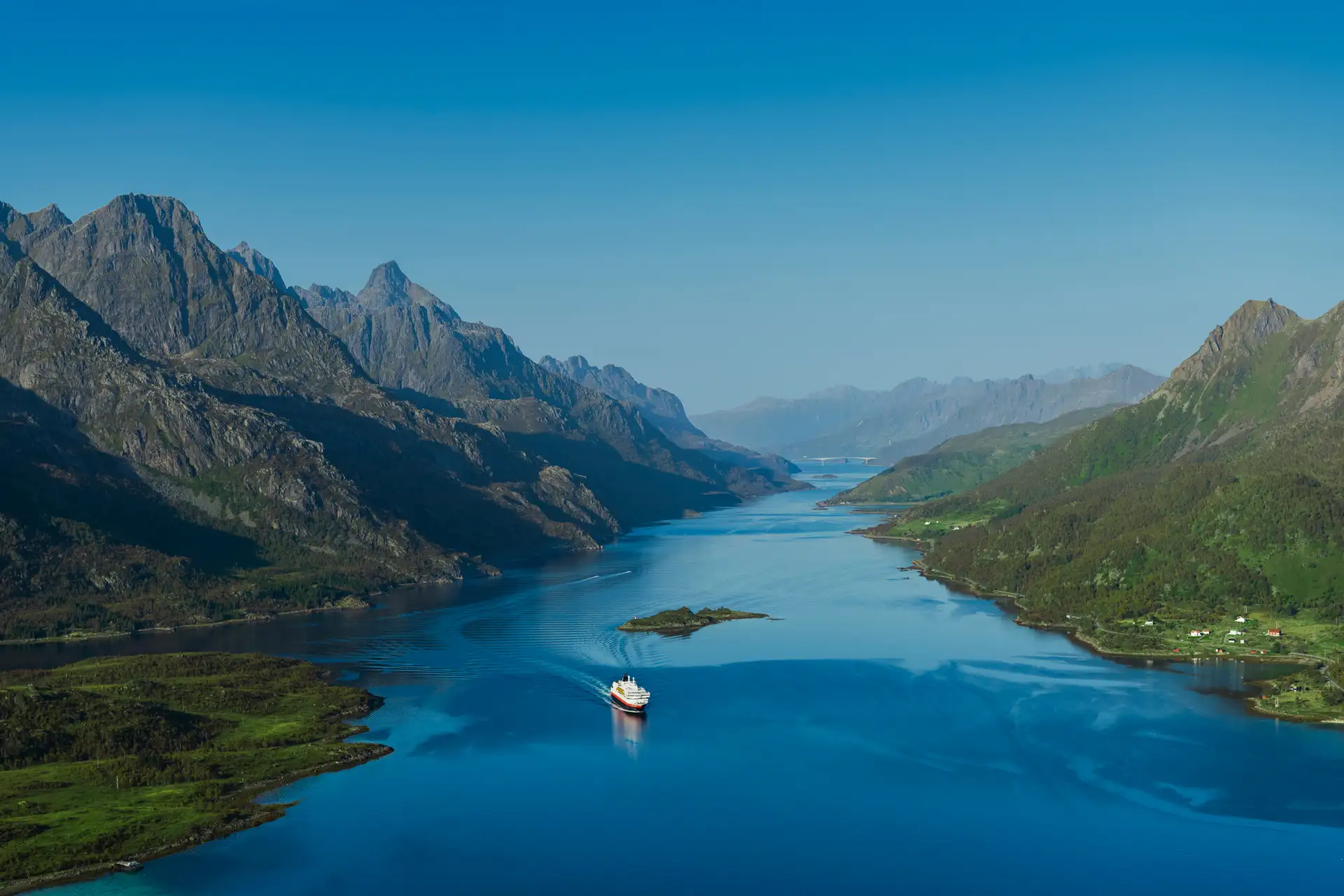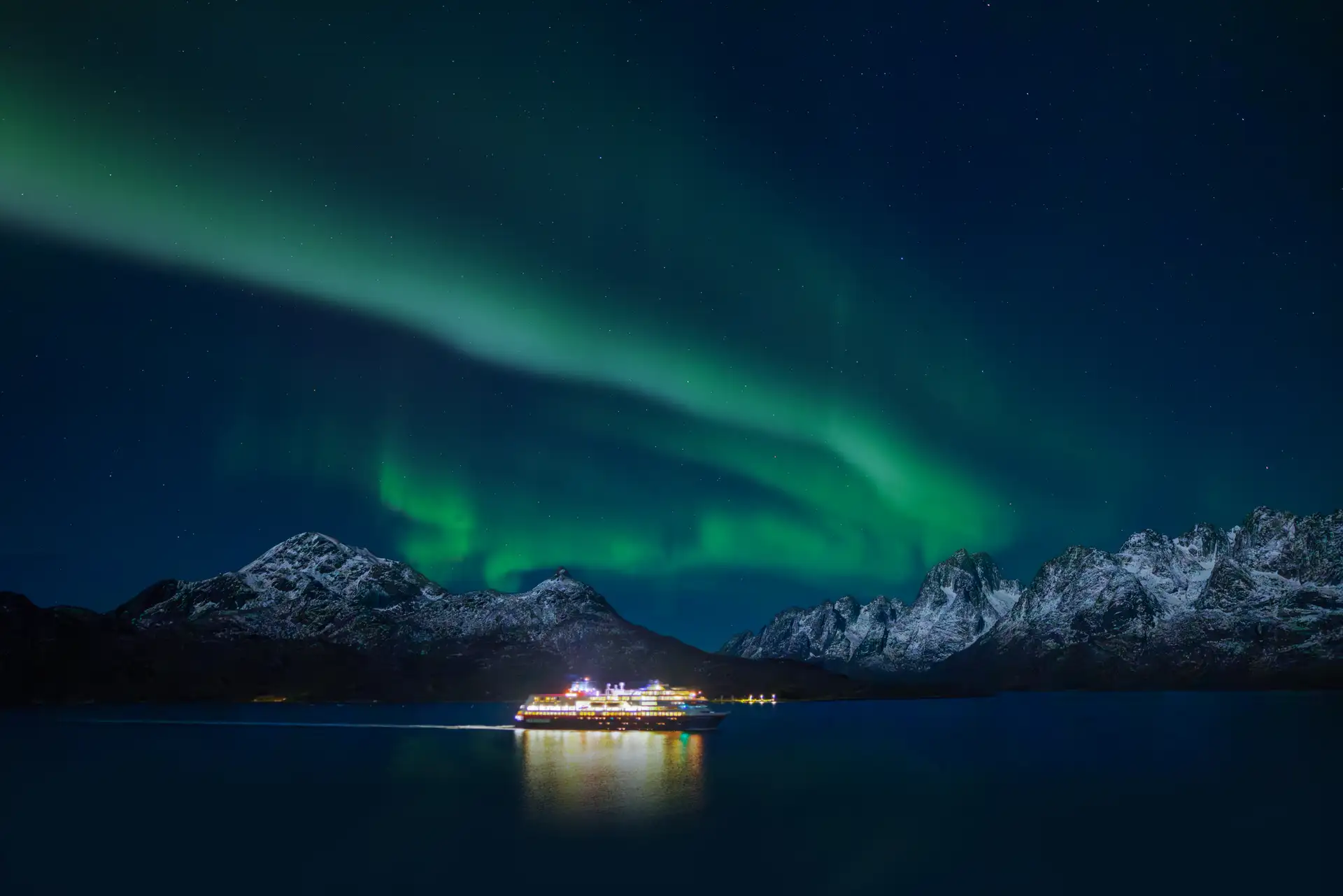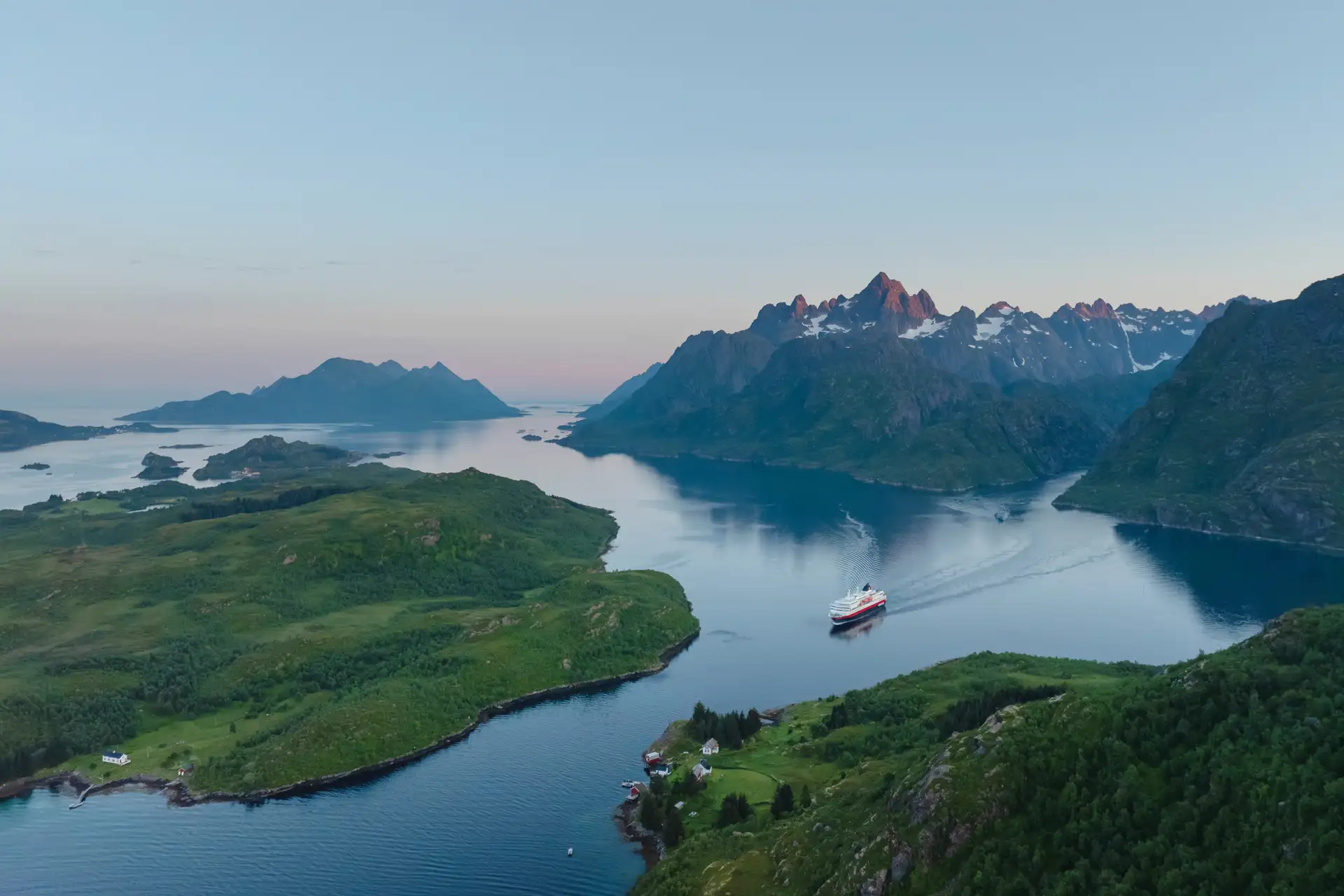Norway’s UNESCO World Heritage Sites
Norway has eight UNESCO World Heritage sites, each of which is worth your time and perhaps a visit before or after your Norway cruise.

Geirangerfjord and Naeroyfjord
The only natural site included on Norway’s World Heritage List, these west Norwegian fjords are among the longest and deepest in the world. Their attractive setting is probably what you imagine when you picture a fjord, complete with waterfalls, forests, high cliffs and picturesque villages.
Between June and August, you can sail into the Geirangerfjord on a Norway cruise with Hurtigruten. This is the best way to experience the fjord in full, allowing you to witness some of its spectacular attractions up close.


Bryggen
Your Norway cruise is likely to start in the coastal city of Bergen, which is home to the World Heritage Site of Bryggen. Overlooking the bay of Vågen, this wharf neighbourhood made up of colourful wooden houses has been destroyed repeatedly by fires, most recently in 1955, but always rebuilt in the style of what was there before.
Today, it is home to restaurants and craft shops and stands as a reminder of what wooden urban structures in Northern Europe looked like during the time of the Hanseatic League.
Urnes stave church
Between the 12th and 13th centuries, some 2,000 stave churches were constructed across Norway using wood and poles (‘staver’ in Norwegian).
Today, only 28 remain and Urnes stave church – the only stave church in the world inscribed on the UNESCO World Heritage List – is one of the oldest still standing, dating from around 1130. It’s a must-see for all history and architecture aficionados.


Rock art of Alta
Found in Finnmark in the far north of Norway, the stunning rock art of Alta dates from around 4200 to 500 B.C.
There are thousands of paintings and engravings found across 45 sites across the Alta Fjord, with motifs ranging from reindeer, whales and birds to hunters, dance processions and other prehistoric rituals.
The Vega Archipelago
Just south of the Arctic Circle, the 6,500 islands, islets and skerries of Vega are one of Norway's national treasures. Inhabited since the Stone Age, its local residents depend heavily on fishing and farming, as well as eiderdown production.


Struve Geodetic Arc
Between 1816 and 1855, astronomer Friedrich Georg Wilhelm Struve undertook a huge project to measure a long segment of a meridian. This eventually helped scientists to learn the exact size of the Earth.
The Struve Geodetic Arc is the first techno-scientific cultural site to be added to UNESCO's World Heritage List. Four points of the arc are found in Norway: at Meridianstøtten in Hammerfest; at Lille-Raipas/Unna Ráipásaš in Alta; at Luvddiidčohkka (Lodiken) in Kautokeino; and at Bealjášvárri/Muvravárri in Kautokeino.
Rjukan-Notodden Industrial Heritage Site
The most recent addition to Norway's UNESCO list, this site commemorates the construction of a complex to create artificial fertilizer in the early 20th century by the Norsk-Hydro company. It stands as a monument to the Industrial Revolution in Norway, complete with company towns that show where and how workers lived. There are also transport systems, hydroelectric power plants and factories to view.

Roros Mining Town and the Circumference
Much like at Rjukan-Notodden, Roros offers a window into how locals worked and lived. From the 17th century until 1977, copper was mined in the town and in the surrounding area.
Today, the town has retained much of its original character, and is known for its beautiful wooden houses and its well-preserved street layout.


